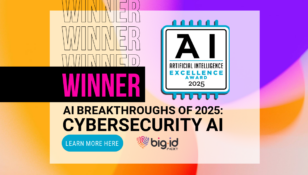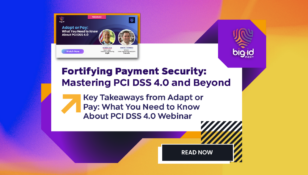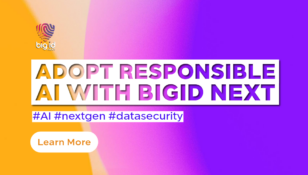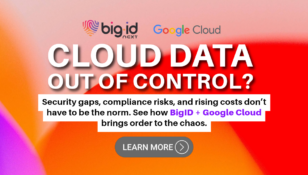A CISO’s Guide to Secure Cloud Architecture
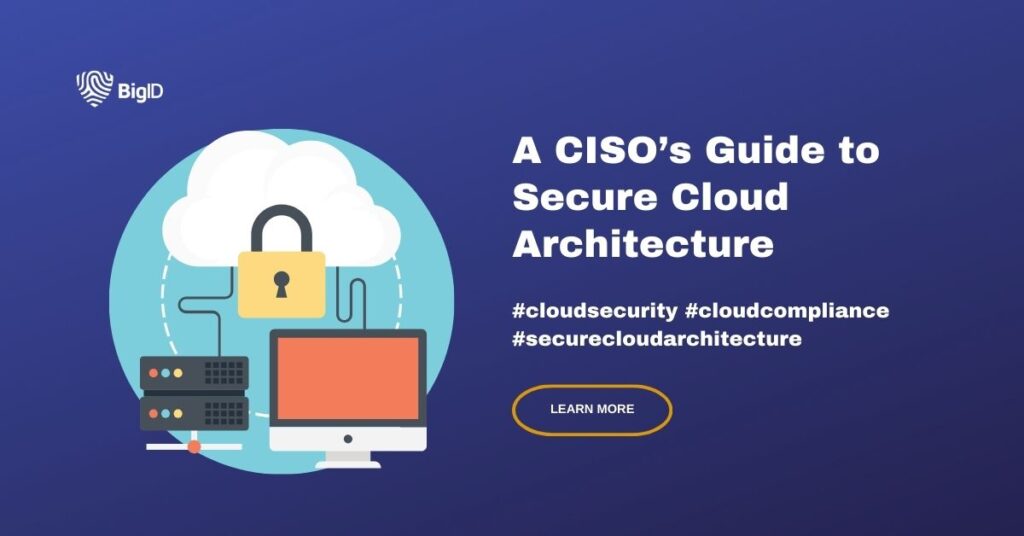
The Importance of Securing Cloud Architecture: Safeguarding Data and Ensuring Business Continuity
In today’s digital landscape, the migration to cloud computing is not just a trend but a necessity for organizations aiming to stay competitive. As businesses embrace cloud services, Chief Information Security Officers (CISOs) are tasked with ensuring that this transition is secure. The cloud offers significant benefits, including scalability, flexibility, and cost savings. However, it also introduces new challenges and threats that require a robust cloud security architecture. This article explores what cloud security architecture entails, its structure, associated threats, critical components, and strategies for securing sensitive cloud data.
What is Cloud Security Architecture?
Cloud Security Architecture refers to the strategic framework and set of practices designed to secure cloud computing environments. It encompasses the design, implementation, and management of security controls to protect cloud-based systems, applications, and data from threats and vulnerabilities. The architecture involves a combination of policies, technologies, and best practices to ensure the confidentiality, integrity, and availability of cloud resources.
The Importance of Securing Cloud Architecture
Securing cloud architecture is crucial for several reasons, as it ensures the protection of sensitive data, maintains the integrity of systems, and supports business continuity. Here are some key reasons why securing cloud architecture is essential:
Data Protection
- Confidentiality: Cloud environments often host sensitive and confidential data, including personal information, intellectual property, and financial records. Securing cloud architecture helps prevent unauthorized access and data breaches.
- Integrity: Protecting data from unauthorized alterations or corruption ensures that information remains accurate and reliable.
- Availability: Ensuring data availability means that users can access the information they need without disruptions, which is vital for maintaining operations.
Compliance and Regulatory Requirements
- Legal Obligations: Organizations are subject to various regulations and standards (e.g., GDPR, HIPAA, PCI DSS) that mandate specific security measures to protect data. Non-compliance can result in severe penalties and legal repercussions.
- Industry Standards: Meeting industry standards demonstrates a commitment to security and can enhance an organization’s reputation and trustworthiness.
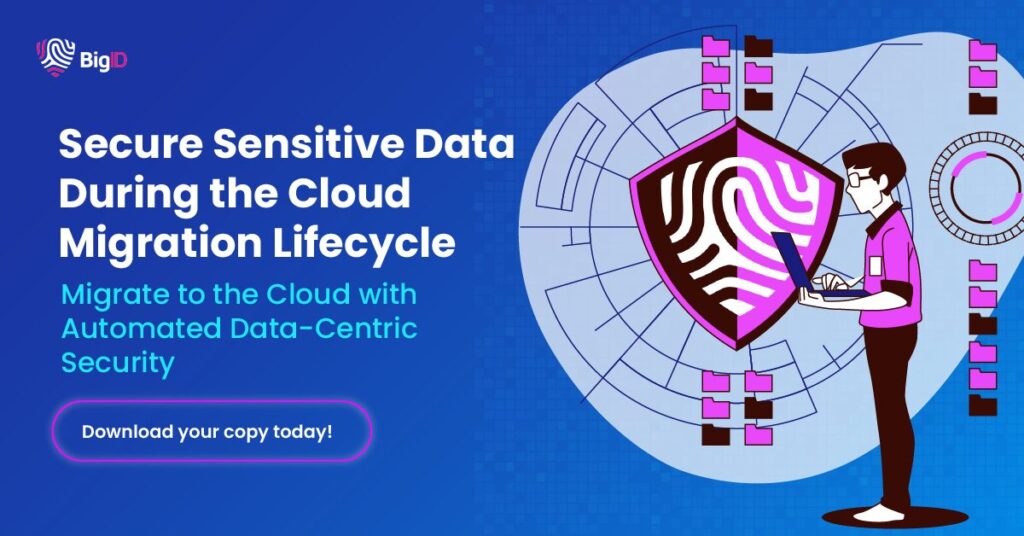
Components of Cloud Security Architecture
Cloud security architecture is a subset of cloud architecture focusing on safeguarding cloud environments against threats. It comprises the strategic framework and tools designed to protect data, applications, and networks. Key elements include:
Identity and Access Management (IAM)
IAM involves managing user identities and their access to cloud resources. It ensures that only authorized users can access specific resources and perform permitted actions.
Key Practices:
- Implementing strong authentication mechanisms, such as multi-factor authentication (MFA).
- Defining and enforcing role-based access controls (RBAC).
- Regularly reviewing and updating user permissions.
Data Protection
Protecting data in the cloud involves safeguarding it at rest, in transit, and during processing.
Key Practices:
- Encrypting sensitive data both at rest and in transit.
- Implementing data loss prevention (DLP) solutions.
- Classifying and labeling data based on sensitivity and criticality.
Network Security
Network security involves protecting cloud infrastructure from unauthorized access and attacks.
Key Practices:
- Using firewalls and intrusion detection/prevention systems (IDPS).
- Implementing virtual private networks (VPNs) for secure data transmission.
- Employing network segmentation to isolate sensitive resources.
Application Security
Application security involves securing applications hosted in the cloud from vulnerabilities and attacks.
Key Practices:
- Conducting regular vulnerability assessments and penetration testing.
- Implementing secure coding practices and application security testing.
- Using web application firewalls (WAFs) to protect against common web threats.
Security Monitoring and Incident Response
Continuous monitoring and incident response involve detecting and responding to security incidents in real time.
Key Practices:
- Deploying security information and event management (SIEM) systems.
- Setting up alerts for suspicious activities and anomalies.
- Establishing an incident response plan and conducting regular drills.
Compliance and Governance
Ensuring that cloud deployments adhere to regulatory requirements and internal security policies.
Key Practices:
- Mapping security controls to relevant compliance frameworks (e.g., GDPR, HIPAA, PCI DSS).
- Conducting regular audits and assessments to verify compliance.
- Implementing governance frameworks to manage security policies and procedures.
Challenges in Cloud Security Architecture
The threat landscape is constantly evolving, necessitating continuous adaptation and updating of security measures. Key threats include:
- Data Breaches: Unauthorized access to sensitive data can lead to severe financial and reputational damage.
- Insider Threats: Employees or contractors with access to cloud resources may misuse them, intentionally or unintentionally.
- Insecure APIs: Vulnerabilities in application programming interfaces (APIs) can expose cloud services to attacks.
- Misconfigured Cloud Settings: Incorrectly configured cloud services can lead to data exposure and security breaches.
Types of Cloud Architecture
Cloud security architecture can be categorized based on the deployment models and service models of cloud computing. Each type of cloud security architecture comes with its own set of security considerations and strategies. Here’s an overview of the different types:
Deployment Models
Public Cloud Security Architecture
In a public cloud, services are provided over the internet and shared across multiple organizations. The infrastructure is owned and managed by third-party cloud service providers (e.g., AWS, Microsoft Azure, Google Cloud).
Security Considerations:
- Data Segregation: Ensuring data is logically separated from other tenants.
- Compliance: Adhering to industry-specific regulations and standards.
- Access Control: Implementing strong identity and access management (IAM) solutions.
Private Cloud Security Architecture
A private cloud is dedicated to a single organization, offering more control over security configurations. It can be hosted on-premises or by a third-party provider.
Security Considerations:
- Customization: Tailoring security measures to meet specific organizational needs.
- Physical Security: Ensuring the physical infrastructure is protected from unauthorized access.
- Network Security: Implementing robust network controls to prevent external threats.
Hybrid Cloud Security Architecture
A hybrid cloud combines public and private cloud environments, allowing data and applications to be shared between them.
Security Considerations:
- Data Transfer: Securing data as it moves between public and private clouds.
- Integration: Ensuring consistent security policies across environments.
- Visibility: Maintaining visibility and control over resources in both clouds.
Multi-Cloud Security Architecture
A multi-cloud strategy involves using multiple cloud services from different providers.
Security Considerations:
- Vendor Management: Evaluating and managing security across various cloud providers.
- Interoperability: Ensuring seamless integration and consistent security policies.
- Risk Mitigation: Diversifying providers to reduce the risk of vendor lock-in and downtime.
Service Models
Infrastructure as a Service (IaaS) Security Architecture
IaaS provides virtualized computing resources over the internet. Users have control over operating systems and applications but not the underlying infrastructure.
Security Considerations:
- Access Control: Implementing strong IAM policies.
- Network Security: Utilizing firewalls and network segmentation.
- Data Protection: Encrypting data at rest and in transit.
Platform as a Service (PaaS) Security Architecture
PaaS offers a platform for developing, running, and managing applications without dealing with the underlying infrastructure.
Security Considerations:
- Application Security: Protecting applications from vulnerabilities and attacks.
- Data Management: Ensuring secure storage and processing of data.
- Environment Isolation: Isolating applications to prevent cross-tenant data leakage.
Software as a Service (SaaS) Security Architecture
SaaS delivers software applications over the internet on a subscription basis. The provider manages everything from infrastructure to data storage.
Security Considerations:
- Data Privacy: Ensuring that data handling complies with privacy regulations.
- User Access: Managing user access and permissions.
- Third-Party Risks: Evaluating the security practices of SaaS providers.
Securing Sensitive Cloud Data Through Proactive Architecture
To safeguard sensitive data in the cloud, CISOs should adopt a proactive approach to cloud security architecture:
- Risk Assessment: Conduct thorough risk assessments to identify potential vulnerabilities and threats specific to your cloud environment.
- Security Policies and Governance: Develop and enforce comprehensive security policies and governance frameworks that align with industry standards and regulations.
- Data Classification: Classify data based on sensitivity and apply appropriate security controls to protect different data categories.
- Continuous Monitoring and Incident Response: Implement continuous monitoring solutions to detect anomalies and respond to incidents swiftly. Establish an incident response plan to minimize the impact of security breaches.
- Vendor Management: Evaluate and monitor third-party vendors and cloud service providers to ensure they meet security and compliance requirements.
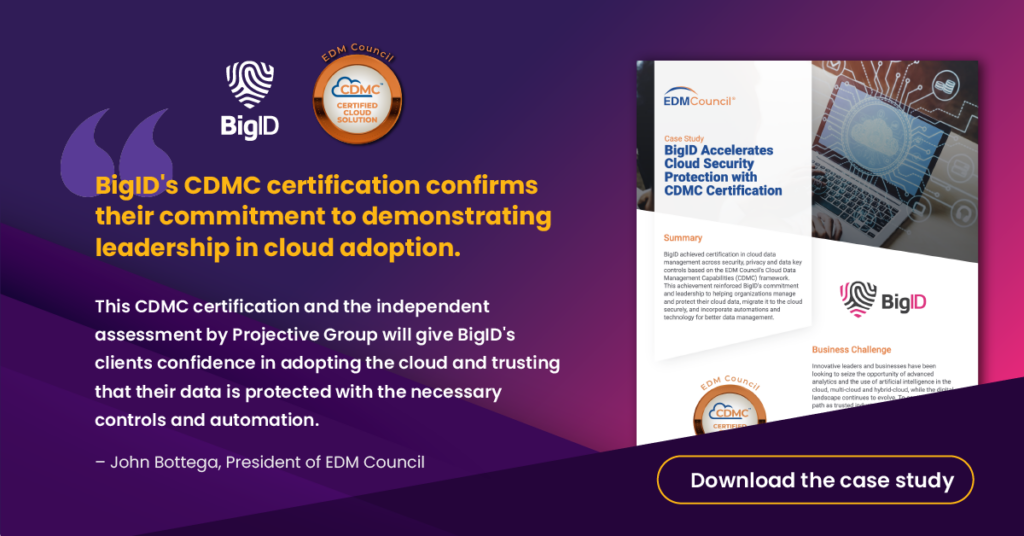
Enhancing Cloud Security Architecture with BigID
BigID is the industry leading platform for data privacy, security, compliance, and AI data management leveraging advanced AI and deep data discovery to give organizations more visibility and control over their enterprise data— wherever it lives.
With BigID organizations get:
- Coverage where you need it, at scale: Scan PB of data accurately, at scale, and without interrupting business. BigID’s coverage extends natively across hundreds of unstructured, structured and semi-structured data types; cloud and on-prem; data at rest & data in motion.
- Accelerate Cloud Migration: Enforce data retention and deletion policies and rules based on the context of the data, at scale. Securely optimize cloud migration with data-driven precision and compliance.
- Multi-Cloud Ready across PaaS, IaaS, SaaS: Deep data coverage across the multi-cloud and beyond. Auto-discovery and easy onboarding for multi-cloud data to improve cloud data risk posture with a data-centric approach.
- Improve Data Security Posture: Leverage OOB and custom data policies to detect potential data risks and vulnerabilities according to sensitivity, location, accessibility, and more.
To kickstart and improve your security posture in the cloud — book a 1:1 demo with BigID today.



